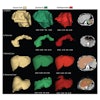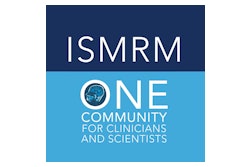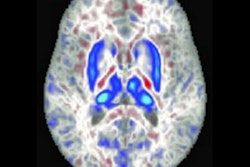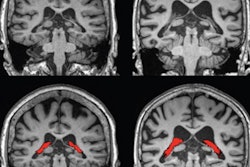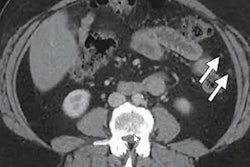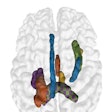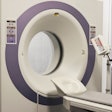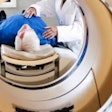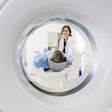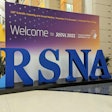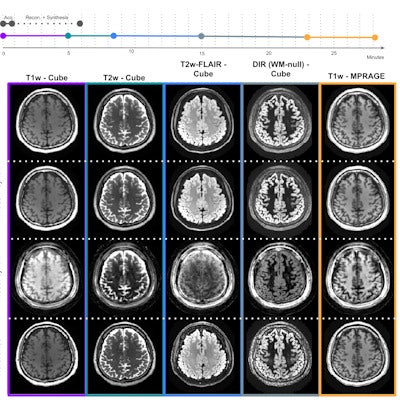
With a few enhancements, including machine learning, a quantitative technique called MR fingerprinting could make a one-minute clinical brain MRI scan a reality, according to a May 9 talk at the International Society for Magnetic Resonance in Medicine (ISMRM) meeting in London.
Researchers from Stanford University developed an MR fingerprinting acquisition and reconstruction framework for quantitative and multicontrast imaging that requires a scanning time of approximately one minute and a reconstruction time of as little as five minutes.
With help from a machine-learning algorithm for image synthesis, the method can provide five high-quality images with common clinical contrasts at 1-mm isotropic resolution, as well as quantitative T1, T2, and proton density maps, according to presenter Sophie Schauman and colleagues.
ISMRM is holding this week's meeting in conjunction with the European Society for Magnetic Resonance in Medicine and Biology and the International Society for MR Radiographers and Technologists.
Room for improvement
There's certainly room to speed up MRI. Traditional MRI operates on k-space data, thus enabling quick reconstruction using standard parallel imaging methods, according to Schauman.
However, "scan times are long, and thick slices are often acquired to overcome this," she said. "Most clinical MRI scans are T1- or T2-weighted. Thus, the image contrast is qualitative and not quantitative."
Modern, highly undersampled acquisition methods can reduce scan times drastically, as well as encode tissue properties in a quantitative manner. However, these faster acquisition times often come at the cost of a longer reconstruction time, rendering these techniques impractical in clinical settings, according to Schauman.
"In order to translate modern MRI into clinically useful tools, we need fast acquisition, we need faster reconstruction, and we need flexibility in acquiring both [the] contrasts that are useful for clinicians as well as quantitative imaging that can be used, for example, in longitudinal studies," she said.
MR fingerprinting
The researchers turned to MR fingerprinting to pursue this goal. MRI fingerprinting is a quantitative technique that allows simultaneous measurement of multiple tissue properties in a single data acquisition.
In their project, the Stanford researchers used a tiny golden-angle shuffling multiaxis spiral projection MR fingerprinting sequence. This method yields 1-mm isotropic resolution for the whole brain yet which isn't currently feasible for use due to its need for more than four hours of reconstruction time.
In an effort to make MR fingerprinting an even more promising method for clinical settings, the researchers sought to incorporate a fast reconstruction method, Schauman said. They used a subspace reconstruction technique that takes approximately seven minutes to perform and involves three subspace components -- instead of the usual five that are used -- and three coils.
The researchers then used machine learning-based synthesis to further improve scan quality and speed. To train the algorithm, they used data contributed from 14 healthy volunteers. Of the 14 subjects, 10 were used for training, two were used for validation, and two were used to test the model -- a previously proposed generative adversarial network.
"To improve robustness of the pipeline in the clinic, a 30-second large field-of-view prescan was included," Schauman said. "In future work, we intend to use the prescan for B0 and B1 estimation, but for now, we use it to optimize our coil compression to suppress signal outside the field of view using a method called [region-optimized virtual (ROVir) coils] and also automatically apply shifts to the data [to] ensure that the brain was centered in the field of view."
Compared to images reconstructed using the traditional technique that takes four hours, the fast reconstruction method has more undersampling artifacts, more blurring, and more noise, Schauman said.
"However, if this information can be recovered in the synthesis network, all of this doesn't matter at all," she said.
In the two test subjects, the synthesized T1-weighted magnetization-prepared rapid acquisition gradient-echo (MP-RAGE), T2-weighted, T2 fluid-attenuated inversion recovery (FLAIR), and double inversion recovery (DIR) images had highly similar slicewise structural similarity indexes compared with synthesized images produced from the reference reconstruction technique.
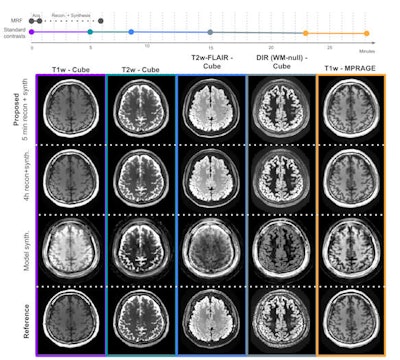 Timeline analyzing the MR fingerprinting acquisition and reconstruction protocol, which takes approximately six minutes (of which the patient is required to be still for one minute), compared to the time required to acquire conventional contrasts (approximately 28 minutes). The above image comprises five synthesized contrasts in the test subject using the proposed method (row 1), a much slower reconstruction (row 2), a simple model-based synthesis (row 3), and the reference scans (row 4). Images and caption courtesy of Sophie Schauman and ISMRM.
Timeline analyzing the MR fingerprinting acquisition and reconstruction protocol, which takes approximately six minutes (of which the patient is required to be still for one minute), compared to the time required to acquire conventional contrasts (approximately 28 minutes). The above image comprises five synthesized contrasts in the test subject using the proposed method (row 1), a much slower reconstruction (row 2), a simple model-based synthesis (row 3), and the reference scans (row 4). Images and caption courtesy of Sophie Schauman and ISMRM."Future directions of the project include continued clinical data collection, with the aim to include patients in the training data set using semisupervised methods and improved robustness of the pipeline regarding patient positioning in the field of view," Schauman said. "We also aim to further optimize the time/quality trade-off by acquiring faster B0 and B1 maps for calibration of quantitative imaging."
